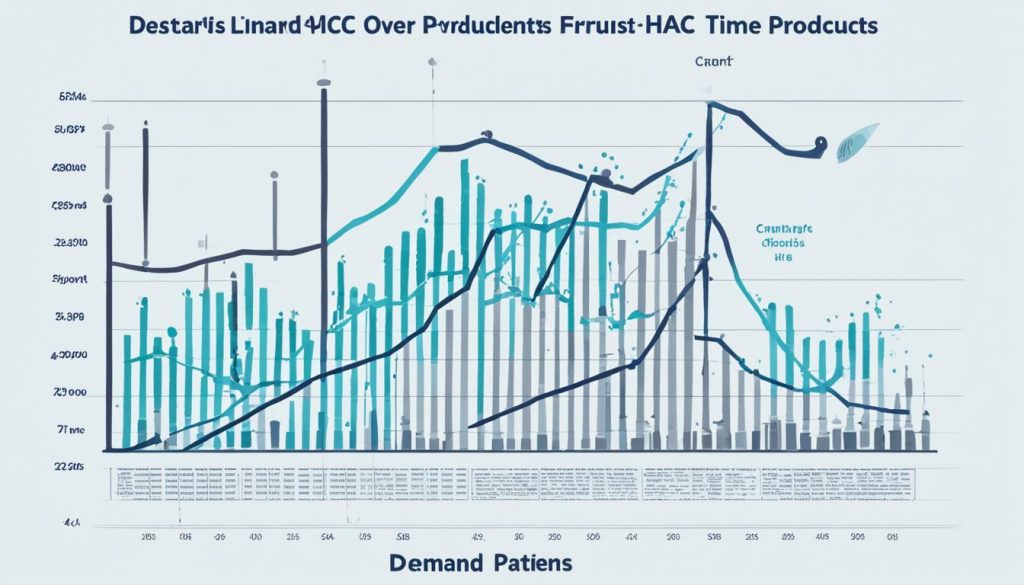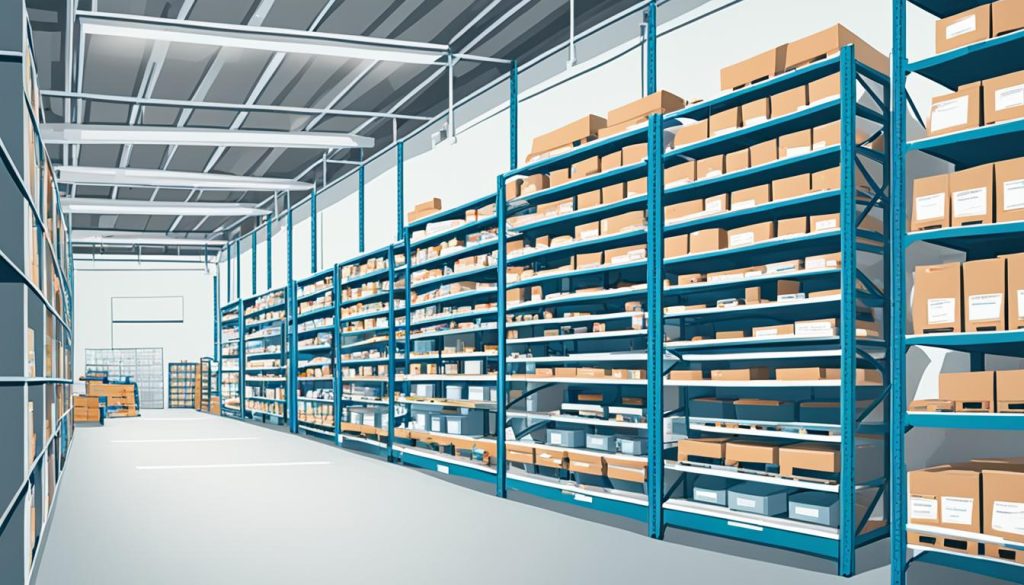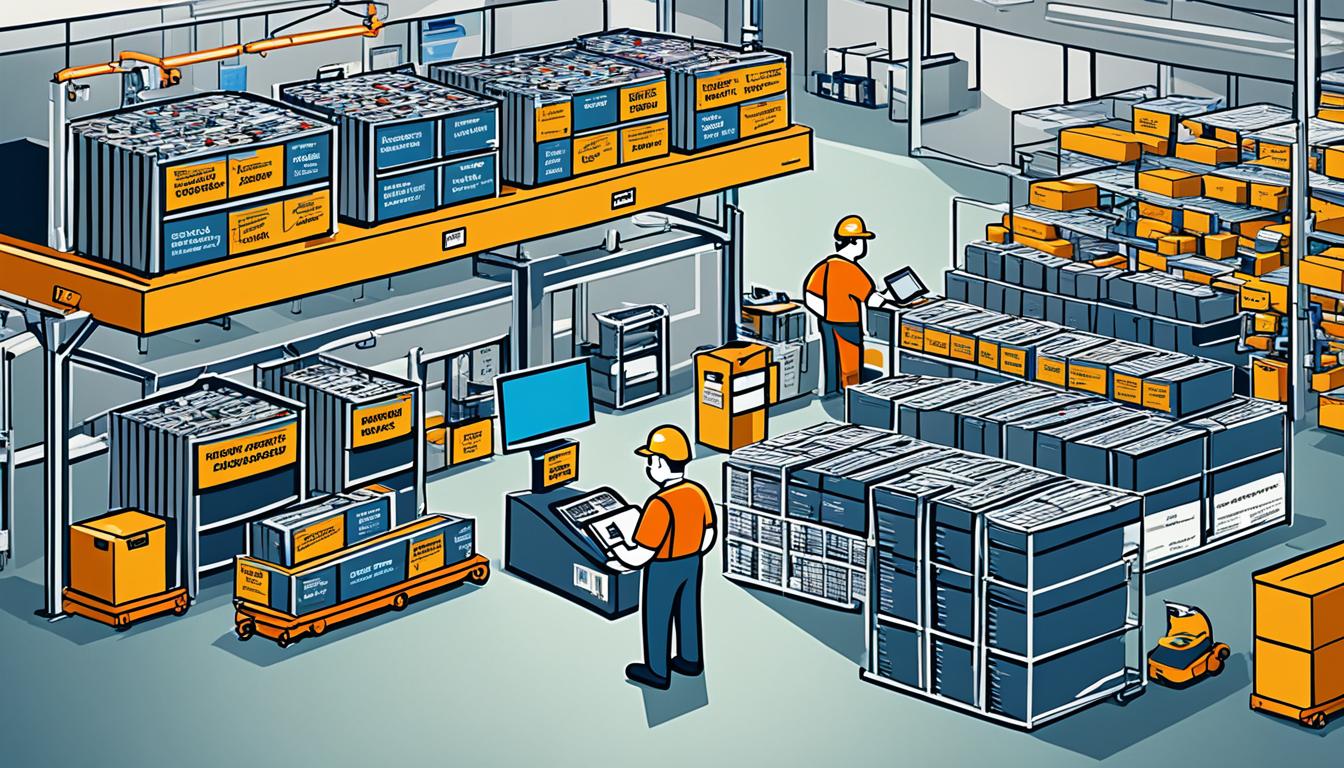Using inventory management software can make your HVAC supply chain better. This tool helps streamline your work, makes you more productive, and makes customers happier. It automates tracking and analyzing your stock, giving you better control over it. This means you can cut costs and make sure important parts are always there.
Managing your HVAC supply chain well is key to doing well in business. Tracking inventory by hand takes a lot of time and can lead to mistakes. With the right software, you can keep an eye on stock levels, spot trends, and get ready for busy seasons. This makes your daily work better and sets your HVAC business up for growth and success.
Inventory management software is a great answer to supply chain problems for HVAC businesses. It gives you real-time stock updates, automates ordering, and helps you make smart choices based on data. By using this tech, you’ll be ready to serve customers better, use your resources wisely, and stay ahead in the changing HVAC market.
Understanding the HVAC Supply Chain Challenges
The HVAC industry has its own set of supply chain challenges. These need careful management and strategic planning. Fluctuating demand and complex inventory systems are just a few obstacles businesses face to stay efficient and profitable.
Seasonal Demand Fluctuations
Seasonal demand for HVAC services is a big challenge. Air conditioning units are in high demand during summer, while heating systems are needed in the cold months. Businesses must forecast and prepare for these demand spikes well in advance, sometimes years ahead.
Complex Multi-Echelon Inventory Management
HVAC supply chains have a complex inventory system with multiple storage locations. This includes everything from large warehouses to local showrooms. It’s important to balance stock levels across these locations to meet customer needs without wasting money on too much inventory.
Regulatory Compliance and Industry Standards
The HVAC industry has to follow changing regulations and standards, especially about energy efficiency. Starting in 2023, new rules require distributors to offer a wider range of products. This adds complexity to managing inventory. To stay compliant and meet market needs, a flexible and responsive supply chain strategy is needed.
| Challenge | Impact | Solution |
|---|---|---|
| Seasonal Demand | Inventory fluctuations | Advanced forecasting |
| Multi-Echelon Management | Complex stock balancing | Integrated inventory systems |
| Regulatory Compliance | Product portfolio changes | Adaptive supply strategies |
The HVAC industry is expected to grow by 13% from 2023 to 2028. Efficient inventory management is crucial to stay competitive. To overcome these challenges, advanced tools and strategies are needed to optimize operations and meet customer demands.
The Role of Inventory Management Software in HVAC
Inventory management software changes the game for HVAC businesses. It automates stock control and boosts efficiency. This tech makes managing your supply chain much easier.
With this software, tracking your inventory in real-time is a breeze. You can set levels for when to order more parts automatically. This way, you never run out of what you need but don’t end up with too much stock.
This software also makes managing your logistics better. It helps you work with vendors more efficiently and makes checking in parts easier. You can keep an eye on all your locations from one place, making sure your inventory is accurate and easy to see.
| Feature | Benefit |
|---|---|
| Real-time tracking | Prevents stockouts and overstock situations |
| Automated reordering | Ensures parts availability without manual intervention |
| Multi-location management | Improves overall inventory control across sites |
| Vendor relationship management | Enhances supply chain efficiency |
When you link inventory management software with other business tools, you get a streamlined HVAC logistics solution. This integration means happier customers and better cash flow for your business.
Key Features of HVAC Inventory Management Software
HVAC inventory management software is key to a smooth supply chain. It has tools that make things more efficient and cut costs.
Real-Time Inventory Tracking
These systems give you real-time updates on what’s in stock. You can see instantly what you have, avoiding stockouts and overordering. This lets you make quick, smart choices.
Automated Reordering and Forecasting
Automated reordering removes the guesswork from restocking. The software looks at how much you use and sets levels to order more when needed. When stock gets low, it places orders automatically.
Multi-Location Management
For companies with many warehouses or service centers, managing inventory across them is crucial. You can move stock easily between places, making sure your inventory is well-used everywhere.
Barcode and RFID Integration
Using barcodes and RFID tags makes tracking more accurate and fast. Scanning items when they come in, move, or sell keeps track of them well. This cuts down on mistakes and saves time.
| Feature | Benefit |
|---|---|
| Real-Time Tracking | Prevents stockouts and overordering |
| Automated Reordering | Reduces manual work and ensures timely restocking |
| Multi-Location Management | Optimizes inventory across all locations |
| Barcode/RFID Integration | Improves accuracy and speeds up processes |
Using these features can greatly improve your HVAC supply chain. The right software helps you keep the right stock, lowers costs, and makes customers happier.
Implementing Inventory Management Software in Your HVAC Business
Using HVAC inventory software can change how your business runs. By planning carefully, you can make your operations more efficient. Let’s look at the main steps to set up a successful HVAC inventory system.
First, check how you manage your inventory now. Find out what needs to get better and set goals for your new system. This will help you pick the right software for your needs.
When choosing software, look for one that works well with your current systems. This is key for easy HVAC business automation. Think about how scalable, easy to use, and supported the software is when deciding.
Training your team is vital. Offer detailed training on features like automated ordering and tracking in real-time. Make sure they get to practice to feel confident and skilled.
Start adding the new system step by step to reduce any problems. Begin with the basics and add more features later. This lets your team get used to it slowly and makes the change easier.
| Implementation Phase | Focus Area | Duration |
|---|---|---|
| Initial Setup | Basic inventory tracking | 2-4 weeks |
| Core Features | Automated reordering | 4-6 weeks |
| Advanced Integration | Multi-location management | 6-8 weeks |
It’s important to keep checking and improving the system over time. Watch important numbers and listen to what your users say to make changes. This keeps your HVAC inventory software working well for your business as it grows.
Optimize Your HVAC Supply Chain with Inventory Management Software
Inventory management software changes the game for HVAC supply chains. It makes operations smoother, boosts efficiency, and makes customers happier.
Improving Inventory Accuracy and Visibility
For HVAC businesses, getting inventory right is key. With real-time tracking, you see stock levels clearly across all locations. This cuts down on guesswork and lowers inventory counting mistakes.
Reducing Stockouts and Overstock Situations
Automated reordering uses past data and seasonal trends to avoid stockouts. It also stops overstocking, which saves money. This way, you have the right parts when you need them without having too much inventory.
Enhancing Supplier Relationships
Managing suppliers gets easier with inventory software. It keeps track of purchases and invoices, making things more organized. This info helps you negotiate better deals and terms with vendors.
| Benefit | Impact on HVAC Supply Chain |
|---|---|
| Real-time tracking | Increased inventory accuracy |
| Automated reordering | Reduced stockouts and overstock |
| Supplier data management | Improved vendor relationships |
Using inventory management software brings big wins for HVAC supply chains. It leads to better operations, lower costs, and happier customers.
Leveraging Data Analytics for Supply Chain Optimization
Data analytics changes the game in HVAC supply chain management. It helps businesses make better choices and work more efficiently. Let’s see how using data can change your operations for the better.
Demand Forecasting and Trend Analysis
Forecasting HVAC demand lets you plan for the future. Advanced software looks at past data, seasonal trends, and market changes. This way, you can stock up before it gets busy and avoid having too much stock when it’s slow.

Performance Metrics and KPI Tracking
It’s key to track important performance indicators (KPIs) for a successful supply chain. Keep an eye on things like how often inventory turns over, how well orders are filled, and how suppliers perform. These numbers help you spot problems and make things better.
| KPI | Target | Current Performance |
|---|---|---|
| Inventory Turnover | 12 times/year | 10 times/year |
| Order Fulfillment Rate | 98% | 95% |
| Supplier On-Time Delivery | 95% | 92% |
Inventory Optimization Algorithms
Inventory optimization algorithms make managing stock easier. They look at things like how long it takes to get stock, how demand changes, and the cost of storage. By using these algorithms, you can keep just the right amount of stock and cut down on costs.
Using HVAC supply chain analytics lets you make choices based on data. From predicting demand to adjusting stock levels, these tools can really boost your profits. Start using these powerful analytics to stay ahead in the HVAC market.
Integrating Inventory Management with Other Business Systems
Making your HVAC business systems work together is crucial for better operations. By linking your inventory management with other systems, you get a smooth workflow. This makes your business run more efficiently and gives you a full view of your HVAC operations.
Linking HVAC inventory software with ERP systems changes the game. It updates information in real-time, cuts down on mistakes, and reduces manual work. Sales, purchases, and service work together smoothly, keeping track of inventory easily.
CRM software integration boosts customer service. It gives your team quick access to customer history and equipment info. This means quicker problem-solving and more tailored service for customers.
Integrating with financial accounting platforms is key for correct reports. It makes sure your financial info matches up with inventory changes. This helps in making smart choices about stock and cash flow.
| Integration Type | Benefits |
|---|---|
| HVAC ERP Integration | Streamlined operations, real-time data updates |
| CRM Integration | Improved customer service, faster issue resolution |
| Financial Software Integration | Accurate reporting, better financial decision-making |
Choosing HVAC business system integration gives you a single platform. This approach helps in making better decisions and gives a full view of your operations. It’s a smart move to stay ahead in the HVAC industry.
Best Practices for HVAC Inventory Control
Keeping your HVAC inventory in check is key to running smoothly. By using these strategies, you can make your supply chain more efficient and cut costs.
Regular Inventory Audits
It’s vital to regularly check your HVAC stock. Do this every three months to spot any missing items and stop shrinkage. This keeps your records right and helps you order and restock wisely.
Lean Inventory Principles
Using lean inventory for HVAC can boost your profits. Go for just-in-time ordering and programs where vendors manage your stock. These methods cut down on extra inventory and lower storage costs. This frees up money for other business needs.
Effective Storage and Organization
Good storage and organization are crucial for managing inventory well. Use a logical system for categorizing and labeling items. This makes things easier to find and lowers the chance of damage or spoilage of HVAC parts.

| Practice | Frequency | Benefits |
|---|---|---|
| Inventory Audits | Quarterly | Accurate stock levels, reduced shrinkage |
| Lean Inventory | Ongoing | Lower carrying costs, improved cash flow |
| Storage Organization | Daily | Faster retrieval, reduced damage |
By following these HVAC inventory control tips, you can work more efficiently and stay ahead in the industry. Use tech like barcode or RFID for tracking and updates. This makes managing your inventory even better.
Conclusion
Using inventory management software to optimize your HVAC supply chain changes the game for your business. This tool helps you handle the challenges of HVAC companies, like seasonal demand and complex inventory. With features like real-time tracking and automated reordering, you’ll see big improvements.
Inventory management software is key for HVAC operations. It’s not just about tracking parts. It helps streamline your whole business. You’ll have better control over stock, cut down on waste, and make customers happier. These changes mean your business will run more efficiently and make more money.
The HVAC industry is always changing, and staying ahead means using new technology. By adding inventory management software to your systems and following best practices, you’re preparing for success. Remember, making your supply chain better is an ongoing effort. It will keep paying off as your business grows and changes with the market.





0 Comments